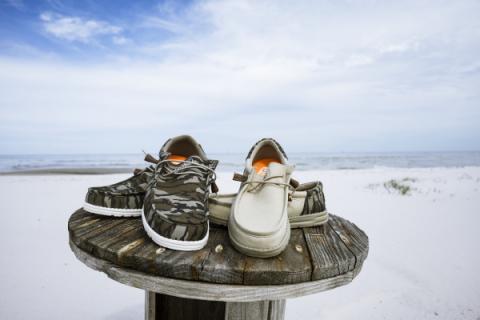Phillip Gentry
Freshwater anglers often look at the calendar around mid-June, shrug their shoulders, and put away their fishing tackle until the fall when water temperatures are more hospitable and recreational traffic on area lakes has diminished.
Although it’s not much help with dodging ski boats and wake boarders, a bit of insider information about summertime fishing is that it has the potential to be the best and easiest fishing of the year.
The basis for this claim is finding good water quality. The same water quality that swimmers and skiers find pleasant has the opposite effect on fish – warmer waters mean lower levels of dissolved oxygen. However, with a little bit of understanding of the science of impounded reservoirs, anglers who understand and look for thermoclines will also find that layer of water where most of the fish concentrate during the summer.
A typical reservoir may have uniform temperatures throughout the lake, from top to bottom, for only a short time in the spring and again in the fall. In the summer, most lakes with sufficient depth are stratified into distinct, non-mixing layers of different temperatures. The top warmer layer is referred to as the epilimnion and the colder bottom layer is known as the hypolimnion. These two layers are separated by the metalimnion layer. The metalimnion, also known as the thermocline, is a zone of rapidly changing temperature.

Most big bodies of water will go through this stratification process in the summer, cooler oxygenated water sinks to the lower levels leaving the upper water column too hot for most fish’s preference. At the lowest levels, decomposition of organic material on the lake floor consumes the usable amounts of oxygen and renders much of this cold-water layer to be unusable. What’s level is a narrow band of cooler, well oxygenated water, where water quality is at it’s optimal level.
The best way to find if there is a thermocline and the depth of it’s location is by adjusting the sensitivity on most of today’s modern sonar units. The cooler, denser water will return the signal and mark a slight line across the graph, marking the depth level. Since it will also be the level where most of the fish are holding, you should expect to see concentrated fish arches.
Another way to determine the thermocline when using live bait is by how long the bait will live at a given depth. If you suspend the bait up too high in the water column, the heated water will quickly kill the bait. If you drop the bait below the thermocline, the lack of oxygen from the hypolimnion layer will also kill the bait. It’s also important when fishing any live bait vertically beneath the boat to get the bait down to the thermocline quickly without killing it.
Just finding the thermocline layer, however, is not enough. While some species of fish will nomadically hang out at that level, it’s a better bet to connect with predatory fish if there is either bait or cover at this same level.
Finding an area where standing submerged timber reaches up to the level of the thermocline is a great place to find catchable fish, multiply by two if there are also baitfish.
During the summer, fish will move into submerged timber because it provides shade, cover, and access to deeper water near a main river channel, but rarely do so if the water quality is poor. Fishing in a forest of standing timber can also be hard on your nerves and tackle, so it’s best to look for a bare spot in the trees or where open areas meet the underwater tree line.
Humps and points are also on the fish attraction list. If there is some current in the lake, expect the thermocline to vary with the bottom terrain. Many professional anglers and guides make a living fishing break lines – an underwater ridge where the bottom drops away to deeper water.

As a method of locating fish at a particular depth, get on a specific break line and just follow it across an expanse of deepwater flat. Since we already know that fish are more inclined to suspend at the level of the thermocline, the key is to put your baits right in the top of the thermocline and then follow the break line until you come across the fish holding on or above some kind of structure.
Manmade cover is another possibility. Bridge pilings, wharves, docks and the like will hold fish in the summer, but again may affect the level of the thermocline and or it’s intensity.
Different species of fish will be targeted differently based on their feeding and staging preferences. Crappie or striped bass may school more horizontally and spread out over an area while black bass, trout, and walleye may be more nomadic. Be sure to chose baits and presentations that will maximize the depth time at the appropriate level.
Armed with this knowledge of thermoclines and deep-water habitat can make summertime fishing more enjoyable and productive, but you’ll never know if you don’t go.






























